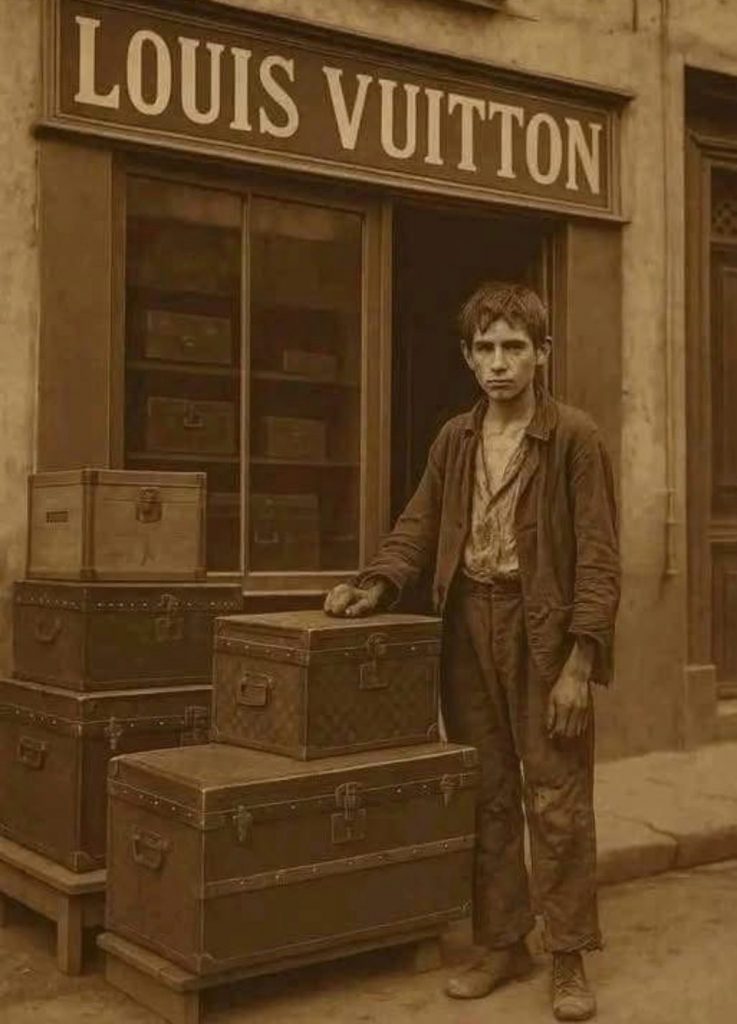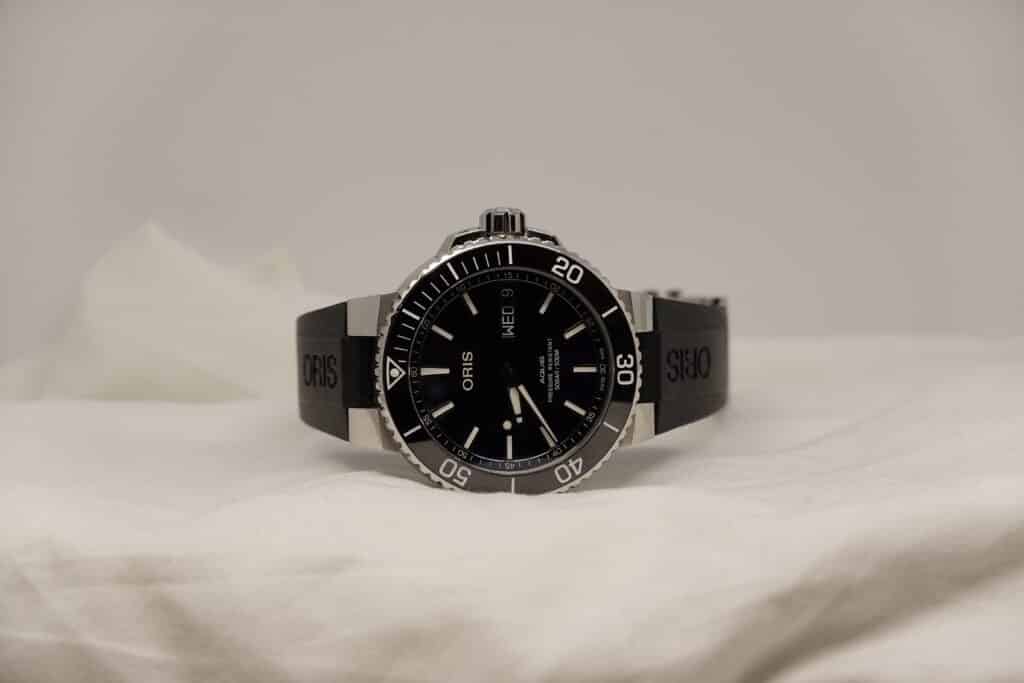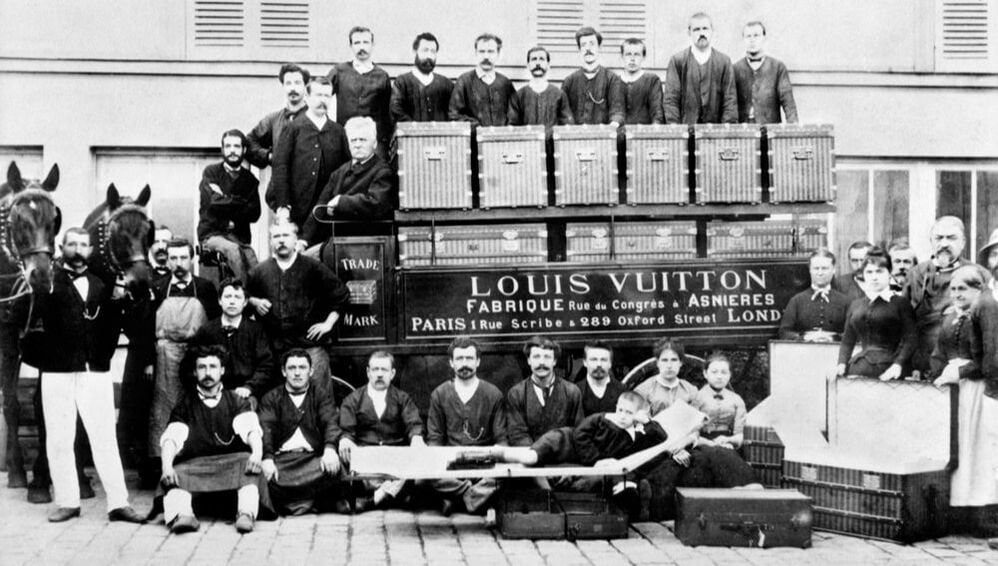The Story of Louis Vuitton: From Humble Beginnings to Global Luxury Icon

In the world of luxury fashion, few names evoke as much prestige and timeless elegance as Louis Vuitton. Founded in the mid-19th century, the brand has evolved from a small Parisian workshop specializing in travel trunks to a multinational conglomerate synonymous with high-end handbags, ready-to-wear clothing, and accessories. Today, as part of the LVMH group, Louis Vuitton continues to blend innovation with heritage, captivating celebrities, influencers, and everyday luxury enthusiasts alike. This article delves into the rich history of Louis Vuitton, tracing its origins, key milestones, challenges, and triumphs that have cemented its status as a cornerstone of the fashion industry.
Early Life of Louis Vuitton and the Brand’s Founding
The story begins with Louis Vuitton himself, born in 1821 in Anchay, a small village in eastern France’s Jura Mountains. Coming from a family of millers, carpenters, and farmers, young Louis displayed an early aptitude for craftsmanship. At just 13 years old, he left home and embarked on a two-year journey on foot to Paris, covering nearly 300 miles while working odd jobs along the way to survive. Upon arriving in the bustling capital in 1837, the 16-year-old Vuitton apprenticed under Monsieur Maréchal, a renowned box-maker and packer who served the French elite, including Empress Eugénie de Montijo, wife of Napoleon III.
This apprenticeship honed Vuitton’s skills in creating custom trunks and packaging delicate items for travel. During this era, travel was transforming with the advent of railways and steamships, increasing demand for durable, practical luggage. In 1854, at the age of 33, Vuitton struck out on his own, opening his first workshop at 4 Rue Neuve-des-Capucines in Paris. The sign outside read “Louis Vuitton Malletier,” with “malletier” meaning trunk-maker. His early success stemmed from catering to the aristocracy’s needs for secure, stylish travel gear.
Innovations in Luggage Design
Louis Vuitton quickly distinguished himself through groundbreaking innovations. In 1858, he revolutionized the industry by introducing flat-topped trunks covered in gray Trianon canvas. Unlike the traditional rounded-top leather trunks that were prone to water damage and difficult to stack, Vuitton’s designs were lightweight, airtight, and stackable—ideal for the new modes of transportation. This practical yet elegant approach earned him a loyal clientele, including royalty and explorers.
By 1872, Vuitton updated the design with a beige canvas featuring red stripes, further enhancing durability and aesthetics. Counterfeiting soon became an issue as imitators copied his popular styles. In response, he introduced the Damier Canvas pattern in 1888—a checkerboard of light and dark brown squares emblazoned with “Marque L. Vuitton Déposée” (L. Vuitton registered trademark). This was one of the earliest uses of branding to combat fakes, a problem that persists to this day.
In 1886, Vuitton and his son Georges developed an unpickable lock with two spring buckles, a security feature still used on LV trunks today. The brand’s international appeal grew; in 1871, Ōyama Iwao became the first recorded Japanese customer, ordering luggage during his stay in Paris. Exhibitions like the 1867 Universal Exhibition in Paris and the 1893 Chicago World’s Fair showcased Vuitton’s products to a global audience.
Expansion, the Iconic Monogram, and Family Legacy
Louis Vuitton passed away in 1892, leaving the company to his son Georges. Under Georges’ leadership, the brand expanded rapidly. In 1885, the first international store opened on Oxford Street in London, followed by others in major cities. The most significant innovation came in 1896 when Georges created the now-iconic Monogram Canvas. Inspired by Japanese family crests and Victorian oriental motifs, it featured interlocking “LV” initials, quatrefoils, and flowers on a brown background. Patented worldwide, this design was another anti-counterfeiting measure and became the brand’s signature.
Georges toured the United States in 1896, selling products in cities like New York and Chicago. By 1913, the company opened its flagship on the Champs-Élysées in Paris—the world’s largest travel-goods store at the time—and expanded to New York, Bombay, Washington, Alexandria, and Buenos Aires. In 1901, the Steamer Bag was introduced as a compact companion to larger trunks.
Georges died in 1936, and his son Gaston-Louis took over, navigating the company through turbulent times.
Challenges During World Wars and Post-War Revival
World War I and II posed significant hurdles. During WWI, production shifted to wartime needs, but the brand persevered. WWII was more controversial: The Vuitton family collaborated with the Nazi-occupied Vichy government in France, producing items glorifying leader Philippe Pétain. This dark chapter was later detailed in the 2004 book “Louis Vuitton, A French Saga” by Stephanie Bonvicini.
Post-war, under Gaston-Louis and later his widow Odile Vuitton, the brand focused on revival. In 1959, the Monogram canvas was revamped to be more supple, enabling its use in purses and wallets. Iconic bags like the 1930 Keepall (a lightweight travel duffel), the 1932 Noé (a bucket bag for champagne bottles), and the 1934 Alma (originally custom for Coco Chanel) gained popularity. The 1966 Papillon, a cylindrical handbag, also became a staple.
By the 1970s, with Henry Racamier at the helm, revenue soared. Stores opened in Japan (1978), Taiwan (1983), and South Korea (1984). The 1985 Epi leather line added vibrant, textured options.
The Merger with LVMH and the Modern Era
In 1987, Louis Vuitton merged with Moët Hennessy to form LVMH, the world’s largest luxury conglomerate, ushering in a new phase of global dominance. By 1989, the brand operated 130 stores worldwide, with profits surging. In 1992, it entered mainland China with a store in Beijing.
The appointment of Marc Jacobs as Artistic Director in 1997 marked a creative renaissance. Jacobs launched the first ready-to-wear line in 1998, along with the Monogram Vernis (patent leather) and collaborations that infused street art into luxury. A landmark was the 2001 partnership with Stephen Sprouse, featuring graffiti over the Monogram, followed by the 2003 Takashi Murakami collection with multicolored motifs on black or white backgrounds—a hit that lasted 12 years and boosted sales among younger demographics.
Jacobs also introduced jewelry in 2001 and the Tambour watch collection in 2002. The brand expanded into Africa with a Marrakech store in 2000 and celebrated the Monogram’s centennial in 1996. Legal battles against counterfeiting intensified, with ongoing lawsuits to protect intellectual property.
In 2013, Nicolas Ghesquière succeeded Jacobs, bringing a futuristic edge. Iconic modern bags include the 2007 Neverfull (the best-selling tote), the 2013 Capucines (nodding to the original store location), the 2014 Petite Malle (mini trunk-inspired crossbody), and the 2018 Cannes beauty case. Recent collections, like the 2021 Cruise line with card-inspired prints, continue to innovate while honoring heritage.
Iconic Products, Collaborations, and Cultural Impact
Louis Vuitton’s product evolution reflects its adaptability. From trunks to handbags like the Speedy (a smaller Keepall for urban use) and the Alma, the brand has mastered blending functionality with fashion. Collaborations with artists like Yayoi Kusama, Jeff Koons, and Supreme have kept it relevant, while sponsorships like the Louis Vuitton Cup (since 1983) tie back to its travel roots.
Today, under CEO Michael Burke and part of LVMH led by Bernard Arnault, Louis Vuitton boasts over 460 stores in 50 countries, with annual revenues exceeding €20 billion. It remains a symbol of aspiration, featured in pop culture from films to celebrity endorsements.
Conclusion: A Legacy of Innovation and Endurance
The story of Louis Vuitton is one of resilience, creativity, and unwavering commitment to quality. From a young apprentice’s dream in 19th-century Paris to a powerhouse in the 21st-century luxury market, the brand has navigated wars, economic shifts, and counterfeiting threats while staying true to its founder’s vision. As it continues to expand into new realms like sustainability and digital experiences, Louis Vuitton’s monogram endures as a mark of timeless luxury. For fashion aficionados and travelers alike, LV isn’t just a label—it’s a legend.
This article is part of Bloglux, the news section of joblux.com, where we explore the intersections of luxury, career, and innovation.


